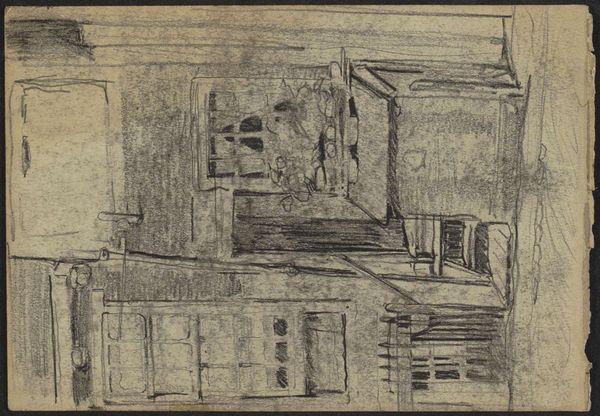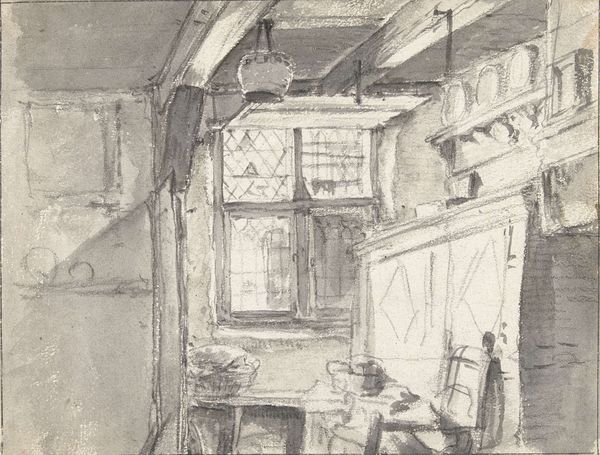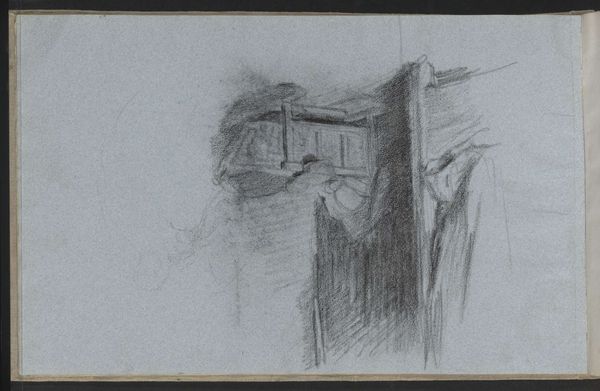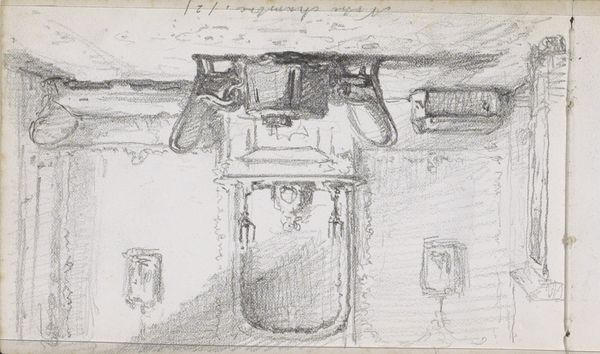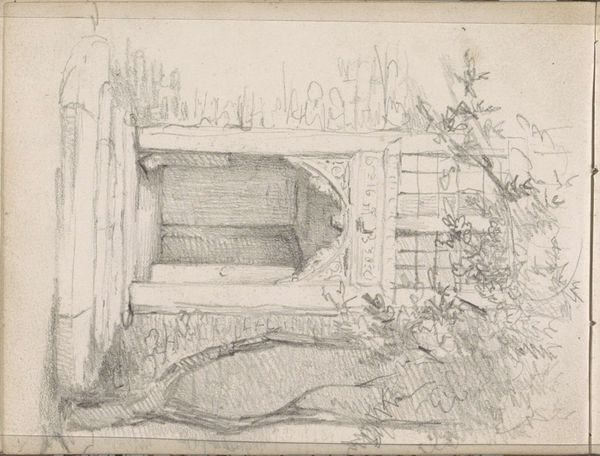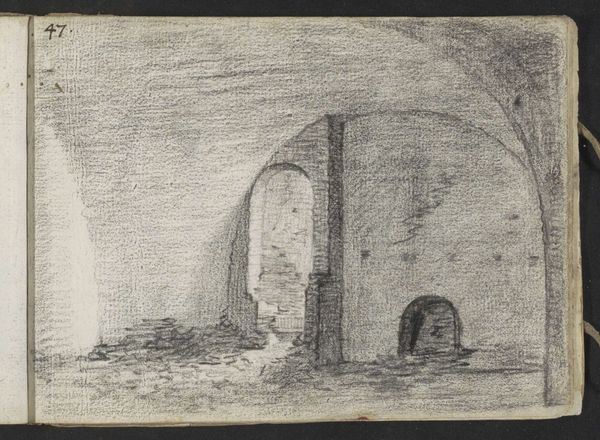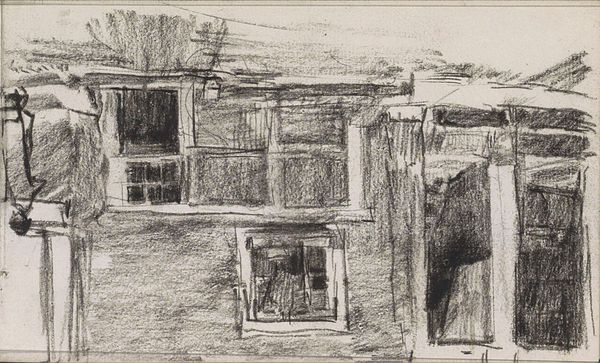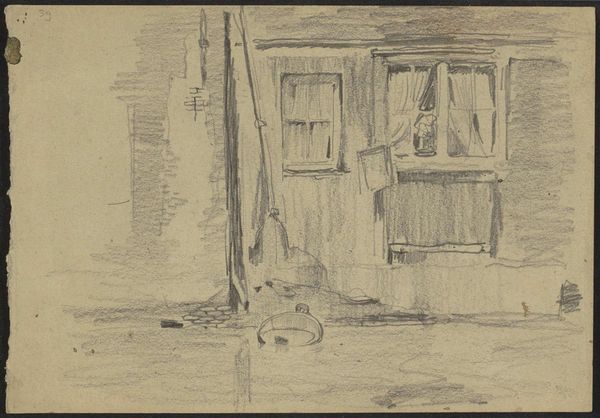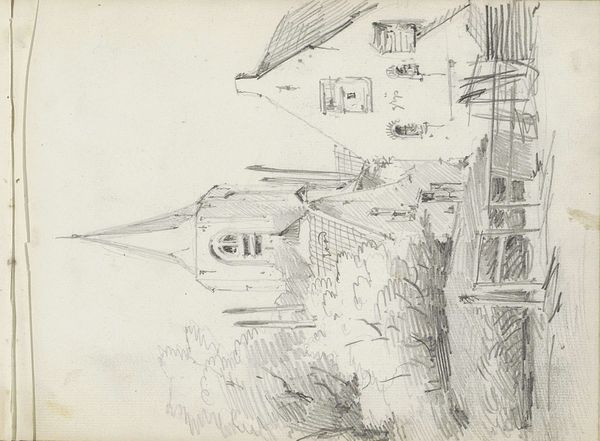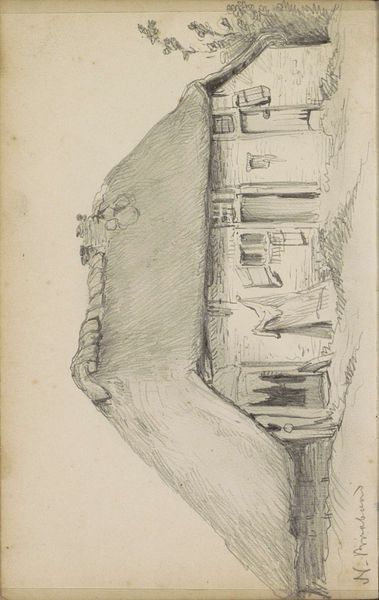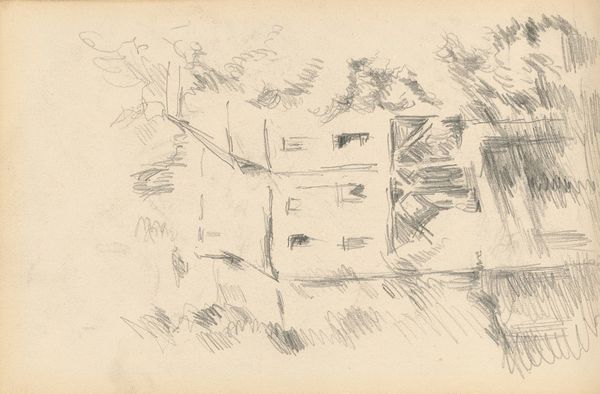
Voordeur van een plattelandshuis, gezien vanuit het interieur 1834 - 1906
0:00
0:00
drawing, paper, pencil
#
drawing
#
pencil sketch
#
landscape
#
paper
#
pencil
#
realism
Copyright: Rijks Museum: Open Domain
Curator: Here we have Maria Vos's pencil drawing, dating from between 1834 and 1906, entitled "Voordeur van een plattelandshuis, gezien vanuit het interieur," which translates to "Front Door of a Rural House, Seen From the Interior." It’s currently held at the Rijksmuseum. Editor: The scene feels remarkably stark. A rudimentary interior captured with these quick, raw pencil strokes... the composition feels tilted and uneasy. It certainly does not romanticize rural life! Curator: Absolutely, let's unpack that. Consider the paper and pencil, basic tools for documentation, widely accessible even then. Vos’s choice signals a desire to record a specific reality, not necessarily elevate it to the status of “high art." The texture of the paper is integral; it grabs the graphite, adding to the rough, unpolished aesthetic. This is an intimate peek at everyday life of that time. Editor: And yet, there’s something about that starkness that speaks volumes. Look at the doorframe itself, that rough-hewn wood… I wonder what kind of rural economies allowed such plain construction, so focused on practicality, yet also unintentionally telling the stories about the community and its cultural norms of that period? Curator: Precisely! The social history of building materials. Access and class dictated the materials and labor that shaped these environments. Consider, too, the intended viewer. Was Vos intending these studies to inform a larger, perhaps painted, work, or were these stand-alone observations meant to serve some historical or documentary function for others? Editor: A good question. You can almost feel the weight of that wood, the chill of the room, can’t you? How those architectural details inform her audience about the culture in which the artwork was produced and how it might have been perceived back then. Curator: It gives me something to think about. Appreciate you highlighting such nuances and sparking this exploration. Editor: My pleasure. It’s artwork like this, simple in material, complex in its telling, that truly makes art history engaging.
Comments
No comments
Be the first to comment and join the conversation on the ultimate creative platform.
